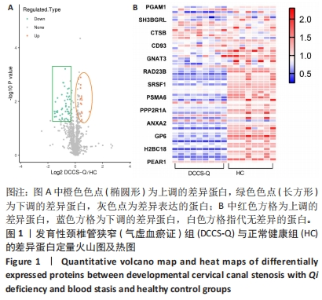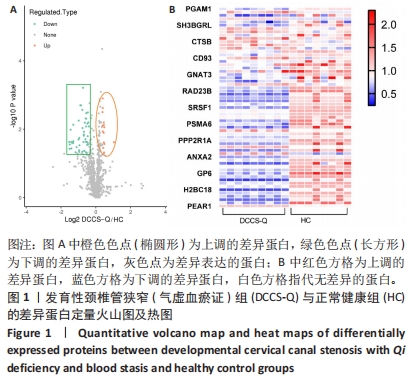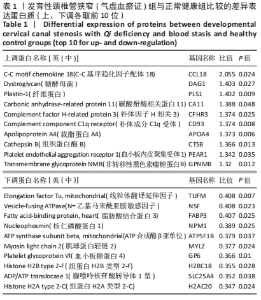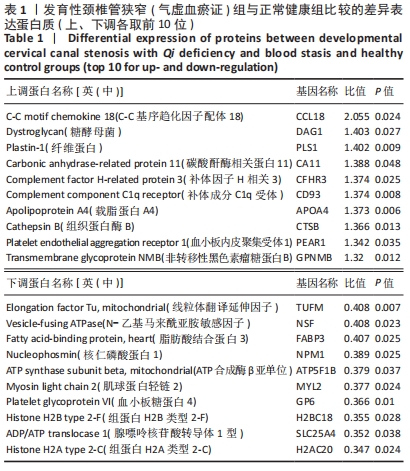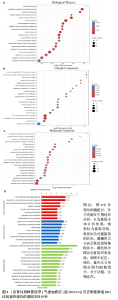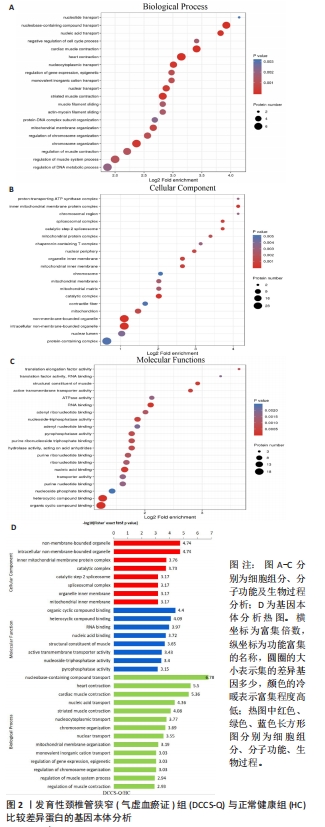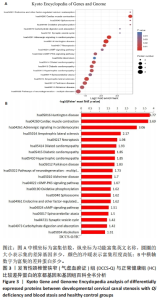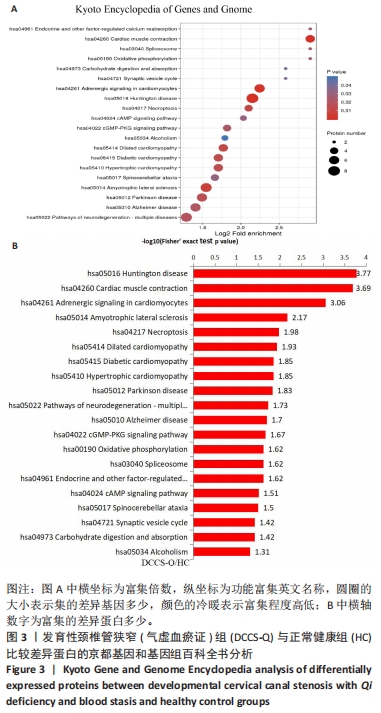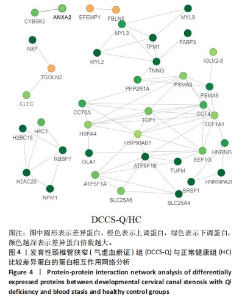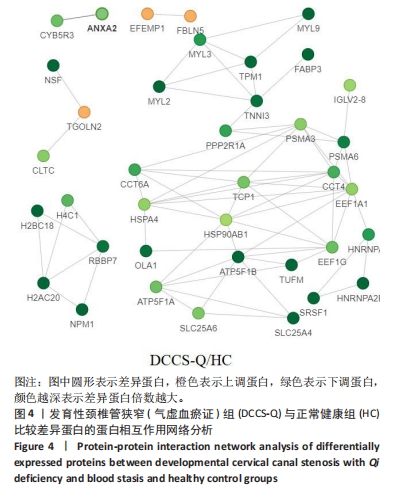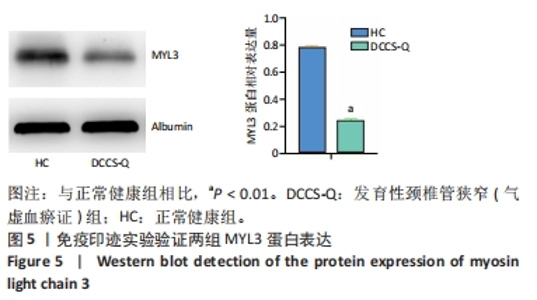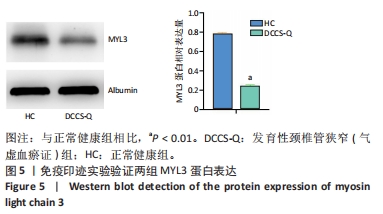[1] HINCK VC, SACHDEV NS. Developmental stenosis of the cervical spinal canal. Brain. 1966;89(1):27-36.
[2] KASAI Y, PAHOLPAK P, WISANUYOTIN T, et al. Incidence and Skeletal Features of Developmental Cervical and Lumbar Spinal Stenosis. Asian Spine J. 2023;17(2):240-246.
[3] ZHANG JT, WANG LF, LIU YJ, et al. Relationship between developmental canal stenosis and surgical results of anterior decompression and fusion in patients with cervical spondylotic myelopathy. BMC Musculoskelet Disord. 2015;16:267.
[4] 张耀,黄开, 沈忆新,等.脊髓型颈椎病患者颈脊髓与椎管匹配关系和脊髓致压因素的动态变化分析[J].中国脊柱脊髓杂志,2021, 31(10):886-894.
[5] 严小明,连福明,林智勤.脊髓型颈椎病与发育性颈椎管狭窄的关系[J].中外医疗,2017,36(21):32-35.
[6] 胡学军,蔡光先,刘柏炎,等.蛋白质组学在中医“证”实质研究中的应用[J].中华中医药杂志,2008,23(2):87-91.
[7] YANG L, HOU A, ZHANG X, et al. TMT-based proteomics analysis to screen potential biomarkers of Achyranthis Bidentatae Radix for osteoporosis in rats. Biomed Chromatogr. 2022;36(4):e5339.
[8] 刘雄,曾平,秦刚,何凯毅,等.系统性红斑狼疮合并激素性股骨头坏死中医证型的血清差异蛋白质组学研究[J].中华中医药学刊, 2018,36(11):2662-2666.
[9] LIU S, KANG Y, ZHANG C, et al. Isobaric Tagging for Relative and Absolute Protein Quantification (iTRAQ)-Based Quantitative Proteomics Analysis of Differentially Expressed Proteins 1 Week After Spinal Cord Injury in a Rat Model. Med Sci Monit. 2020;26:e924266.
[10] NOTANI N, MIYAZAKI M, KANEZAKI S,et al. Comparison of morphology between patients with and without developmental spinal canal stenosis to inform the feasibility of C1 lateral mass screw insertion in the atlas. J Orthop Sci. 2017;22(2):207-212.
[11] 钟远鸣,许伟,李智斐,等.运用脊髓伤方治疗脊髓型颈椎病的临床研究[J].辽宁中医杂志,2018,45(10):2133-2136.
[12] HORNE PH, LAMPE LP, NGUYEN JT, et al. A Novel Radiographic Indicator of Developmental Cervical Stenosis. J Bone Joint Surg Am. 2016;98(14): 1206-1214
[13] 国家中医药管理局.中医病证诊断疗效标准 2012 版(中华人民共和国中医药行业标准)[S].中国医药科技出版社,北京:2012.
[14] 刘瑞莉,吴磊,袁玮,等.MYL3基因在肉牛肌肉生长过程中的功能研究[J].华北农学报,2019,34(2):221-228.
[15] 王顺,吴钢.肌球蛋白调节性轻链磷酸化在心脏疾病中的研究进展[J].心血管病学进展,2016,37(6):629-632.
[16] PARK JW, LEE JH, KIM SW, et al. Muscle differentiation induced up-regulation of calcium-related gene expression in quail myoblasts. Asian-Australas J Anim Sci. 2018;31(9):1507-1515.
[17] WILSON RJ, LYONS SP, KOVES TR, et al. Disruption of STIM1-mediated Ca sensing and energy metabolism in adult skeletal muscle compromises exercise tolerance, proteostasis, and lean mass. Mol Metab. 2022;57:101429.
[18] GARI MA, ALKAFF M, ALSEHLI HS, et al. Identification of novel genetic variations affecting osteoarthritis patients. BMC Med Genet. 2016;17(Suppl 1):68.
[19] 卜献忠,卜保献,许伟,等.急性期神经根型颈椎病患者的血清差异蛋白组学分析[J].中国组织工程研究,2024,28(4):535-541.
[20] QU J, KO CW, TSO P, et al. Apolipoprotein A-IV: A Multifunctional Protein Involved in Protection against Atherosclerosis and Diabetes. Cells. 2019;8(4):319.
[21] GARI MA, ALKAFF M, ALSEHLI HS, et al. Identification of novel genetic variations affecting osteoarthritis patients. BMC Med Genet. 2016; 17(Suppl 1): 68.
[22] OKAMOTO H, CUJEC TP, YAMANAKA H,et al. Molecular aspects of rheumatoid arthritis: role of transcription factors.FEBS J. 2008;275(18): 4463-4470.
[23] PENG R, DONG Y, KANG H, et al. Identification of Genes with Altered Methylation in Osteoclast Differentiation and Its Roles in Osteoporosis. DNA Cell Biol. 2022;41(6):575-589.
[24] CHOI M, PARK S, YI JK, et al. Overexpression of hepatic serum amyloid A1 in mice increases IL-17-producing innate immune cells and decreases bone density. J Biol Chem. 2021;296:100595.
[25] YANG B, LI S, CHEN Z, et al. Amyloid β peptide promotes bone formation by regulating Wnt/β-catenin signaling and the OPG/RANKL/RANK system. FASEB J. 2020;34(3):3583-3593.
[26] SONG J, BAEK IJ, CHUN CH, et al. Dysregulation of the NUDT7-PGAM1 axis is responsible for chondrocyte death during osteoarthritis pathogenesis. Nat Commun. 2018;9(1):3427.
[27] KOTADIYA P, MCMICHAEL BK, LEE BS. High molecular weight tropomyosins regulate osteoclast cytoskeletal morphology. Bone. 2008;43(5):951-960.
[28] YAO B, GAO H, LIU J, et al. Identification of potential therapeutic targets of deer antler extract on bone regulation based on serum proteomic analysis. Mol Biol Rep. 2019;46(5):4861-4872.
[29] SHAO H, GE M, ZHANG J, et al. Osteoclasts differential-related prognostic biomarker for osteosarcoma based on single cell, bulk cell and gene expression datasets. BMC Cancer. 2022;22(1):288.
[30] KOPYLOVA GV, SHCHEPKIN DV, BOROVKOV DI, et al. Effect of Cardiomyopathic Mutations in Tropomyosin on Calcium Regulation of the Actin-Myosin Interaction in Skeletal Muscle. Bull Exp Biol Med. 2016;162(1):42-44.
[31] HE K, GUO X, LIU Y, et al. TUFM downregulation induces epithelial-mesenchymal transition and invasion in lung cancer cells via a mechanism involving AMPK-GSK3βsignaling. Cell Mol Life Sci. 2016; 73(10):2105-2121.
[32] 程韶,舒冰,赵永见,等.氧化应激对骨重建的影响[J].中国骨质疏松杂志,2019,25(10):1478-1482.
[33] 皮闻森,刘家明,黄山虎,等.Aurora-B介导NPM1蛋白磷酸化促进骨肉瘤细胞恶性表型的体外研究[J].天津医药,2019,47(1):5-9+113.
[34] HINCK VC, GORDY PD, STORINO HE. Developmental stenosis of the cervical spinal canal. radiological considerations. Neurology. 1964;14: 864-868.
[35] WANG S, YANG G, ZHU C, et al. Morphological analysis for subaxial cervical pedicle screw insertion in developmental and non-developmental canal stenosis. BMC Musculoskelet Disord. 2019;20(1): 205.
[36] 邵林,潘海涛,王新婷,等. 发育性颈椎椎管狭窄症[J].中国骨伤, 1995,8(5):37-38.
[37] 来佳辉,罗建平,张新胜,等.ACDF治疗单节段脊髓型颈椎病合并发育性颈椎管狭窄临床疗效分析[J].中国脊柱脊髓杂志,2021, 31(7):605-612.
[38] 李缘缘,高碧珍.基于组学技术探讨微观指标在中医证研究中的价值[J]. 中华中医药杂志,2022,37(10):5564-5567.
[39] 王苗苗,王玲,王富强,等. 强直性脊柱炎寒湿痹阻证血清蛋质组学研究 [J]. 中国中医骨伤科杂志,2015,23(12): 9-11.
[40] 卜献忠,卜保献,许伟,等.发育性颈椎管狭窄与脊髓型颈椎病血清差异蛋白组学分析[J].中国组织工程研究,2024,28(11):1704-1711. |
